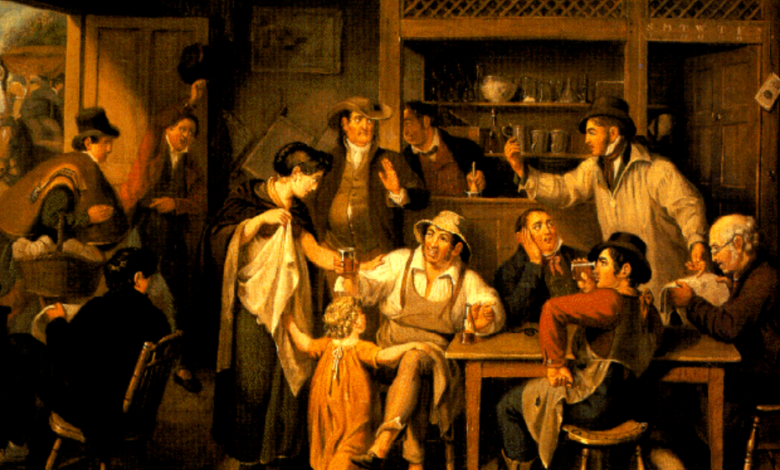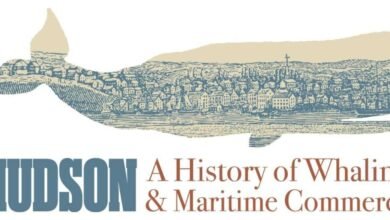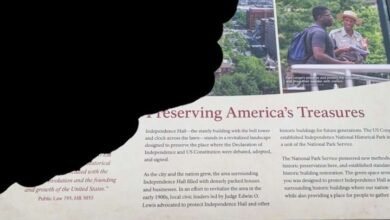1775: New York City Revolutionaries Seize British Arms


 In the early part of the year 1775 a state of uneasiness and expectancy pervaded the City of New York. Trade was prostrate. The merchants met at the Exchange or at the Coffee House and nervously talked over the situation, for which there seemed to be no remedy; while they looked out on the quiet docks, now almost deserted.
In the early part of the year 1775 a state of uneasiness and expectancy pervaded the City of New York. Trade was prostrate. The merchants met at the Exchange or at the Coffee House and nervously talked over the situation, for which there seemed to be no remedy; while they looked out on the quiet docks, now almost deserted.
They were calmly waiting for something to happen, and it came in the news of the battle of Lexington. This was the crisis which produced a decided change in conditions. The dissatisfied people now showed that they had lost all respect for English rule.
Companies of armed citizens paraded the streets aimlessly, and there was great excitement everywhere. The regular soldiers in garrison prudently confined themselves to their barracks.
The machinery of government was out of joint and it was very soon apparent that something should be done to maintain order and form some regular plan of government.
A meeting was called at the Merchants’ Coffee House when it was agreed that the government of the city should be placed in the hands of a committee.
Isaac Low, chairman of the committee of observation, issued a notice stating that the committee were unanimously of opinion that a new committee should be elected by the freeholders and freemen for the present unhappy exigency of affairs, to consist of one hundred persons, thirty-three to be a quorum.
[Isaac Low was a merchant and landowner who initially sided with the Revolution, but later became a Loyalist. His brother, Nicholas Low is credited as a founder of Ballston Spa where he owned a significant portion of the land, including the Sans Souci Hotel.]It was also recommended that they should at the same time choose deputies to represent them in a provincial congress which it was considered highly advisable should be summoned.
A committee such as was recommended was chosen May 1, and, at the same time, twenty-one deputies for the city and county of New York, to meet the deputies of the other counties in provincial congress May 22.
The excitement had in no wise abated when the eastern delegates to congress entered the city, Saturday, May 6, on their way to Philadelphia and were received with the greatest enthusiasm. They were met a few miles out of town by a great number of the principal gentlemen of the place and escorted into the city by near a thousand men under arms.
John Adams, in his diary, says that from Kingsbridge [in the Bronx] the number of people continually increased, until he thought the whole city had come out to meet them. The roads, it is said, were lined with greater numbers of people than were known on any occasion before. All the bells of the city rang out a welcome.

 They were conducted to the tavern of Sam Francis [Fraunces Tavern], where they lodged, and a newspaper states that double sentries were placed at the doors of their lodgings, for what special purpose we are not informed, probably simply to keep the crowd in check and maintain order.
They were conducted to the tavern of Sam Francis [Fraunces Tavern], where they lodged, and a newspaper states that double sentries were placed at the doors of their lodgings, for what special purpose we are not informed, probably simply to keep the crowd in check and maintain order.
The British soldiers garrisoned in the city were powerless to maintain the authority of the crown and were ordered to join the troops at Boston. There were some who advised that they should be made prisoners.
The committee, however, agreed to let them depart with their arms and accoutrements without molestation. They accordingly marched out from the barracks to embark about ten o’clock on the morning of June 6, 1775.
At the time there were at the tavern of Jasper Drake, in Water Street near Beekman Slip, a place well known as a rendezvous of the Liberty Boys [Sons of Liberty] and those opposed to the British measures, about half a dozen men, when word came to them that the British soldiers were leaving the barracks to embark and were taking with them several carts loaded with chests filled with arms.
Transfer of Arms Stopped
They immediately decided that these arms should not be taken from the city. One of the men was Marinus Willett, and what he did that day has become a landmark in the history of the city.
[In the years before the Revolution, Willett was a leader of the Sons of Liberty in the city of New York City. Later in 1775, he would participate in the Invasion of Quebec under Gen. Richard Montgomery. He then engaged in various operations in the Hudson Valley, until ordered to Fort Stanwix in May 1777, where he was second in command to Col. Peter Gansevoort.]They started out on different routes to notify their friends and obtain assistance. Willett went down Water Street to the Coffee House where he notified those who were there of what was to be done and then proceeded down to the Exchange at the foot of Broad Street.

 When he saw the troops and the carts laden with arms approaching he went up to meet them, and not hesitating a moment, seized the horse drawing the leading cart by the bridle, which caused a halt and brought the officer in command to the front.
When he saw the troops and the carts laden with arms approaching he went up to meet them, and not hesitating a moment, seized the horse drawing the leading cart by the bridle, which caused a halt and brought the officer in command to the front.
The crowd that immediately collected, including the mayor, gave Willett little support, but soon John Morin Scott (1730 – 1784) came to his assistance, asserting that the committee had given no permission for the removal of the arms.
The result was that the soldiers made no resistance to the seizure of the arms and quietly embarked without them. These arms were used by the first troops raised in New York under the orders of the Second Continental Congress.
Read more about the American Revolution in New York State.
This essay was drawn from Old Taverns of New York by William Harrison Bayles, published by Frank Allaben Genealogical Company, 42nd Street, New York, NY, in 1915. It was very lightly edited and annotated by John Warren.
Illustrations, from above: “Village Tavern” by artist John Lewis Krimmel (American, 1786-1821), 1813-1814; Fraunces Tavern today; and Marinus Willett seizing British arms.
Source link




